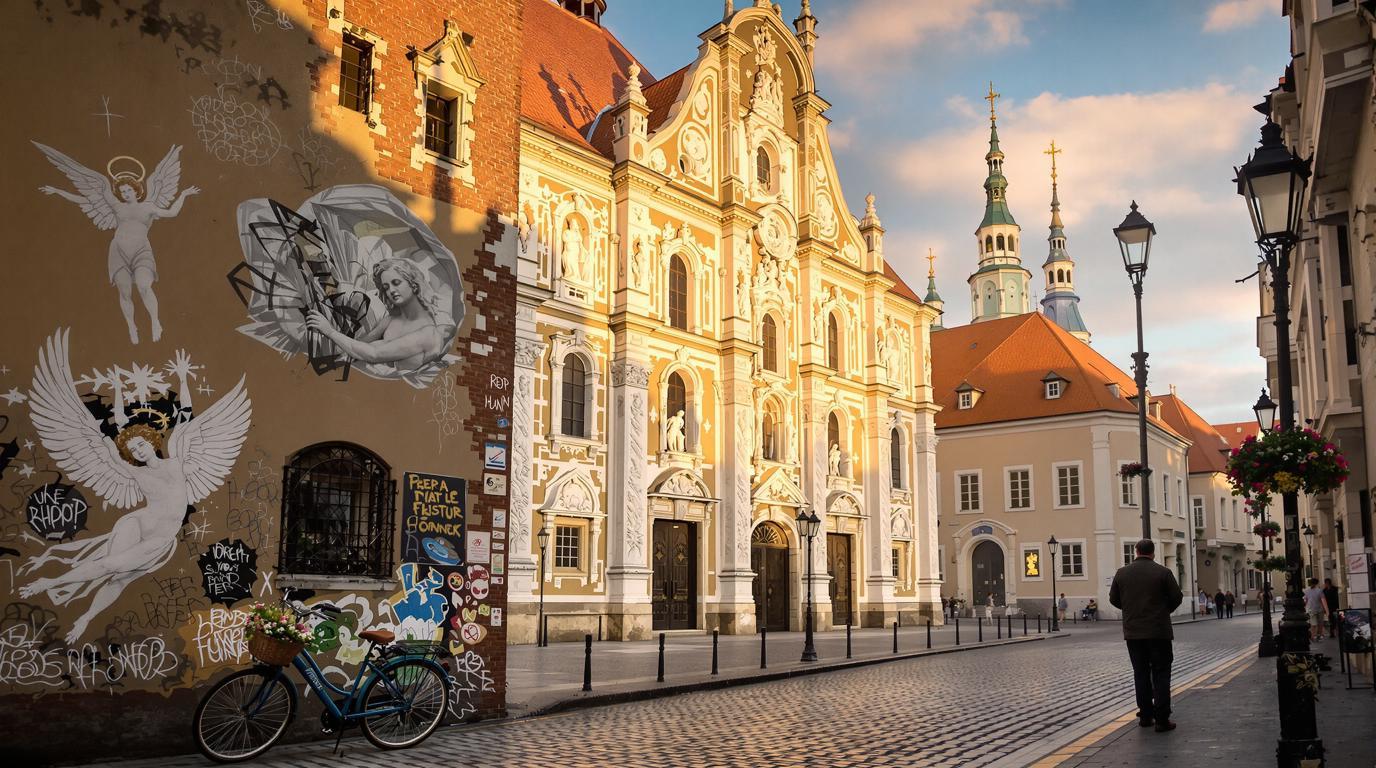Vilnius, Lithuania’s captivating capital, isn’t just another European city break destination. This Baltic gem harbors one of Europe’s largest surviving medieval centers and a secret artistic republic where bohemian ideals thrive alongside Baroque masterpieces. The UNESCO-listed Old Town reveals itself slowly, like a living museum where 1,500 historic buildings whisper stories from centuries past.
A UNESCO treasure with 1,500 architectural wonders
Vilnius Old Town stands as a testament to Northern Europe’s rich architectural heritage. Unlike many reconstructed European cities, Vilnius emerged from history relatively unscathed, preserving authentic structures spanning Baroque, Gothic, Renaissance, and Classical styles. Wandering the cobblestone labyrinth reveals the Palace of the Grand Dukes, gloriously restored after years of meticulous work, now housing Lithuania’s National Museum.
The independent “Republic” hiding in plain sight
Cross the Vilnia River and you’ll discover Užupis, a self-declared artistic republic that “seceded” from Lithuania in 1997. This bohemian district celebrates its independence each April 1st with quirky ceremonies and artistic displays. The contrast between Užupis’ free-spirited energy and the Old Town’s historical gravitas creates Vilnius’ most compelling dynamic.
“In Užupis, we don’t just live in a neighborhood – we inhabit an idea. Our constitution declares everyone has the right to be unique, to love, to make mistakes. This is why artists flock here,” explains Thomas, a local sculptor whose studio overlooks the district.
Baroque splendor that rivals Western Europe
The Church of Saints Peter and Paul stands as Vilnius’ Baroque masterpiece, its interior adorned with over 2,000 stucco figures. Similarly majestic is St. Anne’s Church, a flaming Gothic structure built with 33 different types of brick. Standing before these monuments, you might wonder why Vilnius remains less visited than Prague or Krakow – a blessing for travelers seeking authentic experiences without crowds.
For history enthusiasts intrigued by ancient artistry, this 17,000-year-old cave with Paleolithic art makes a fascinating comparison to Vilnius’ more recent cultural treasures.
Floating above a Baroque masterpiece
For a truly unforgettable perspective, hot air balloon rides offer birds-eye views of Vilnius’ terracotta rooftops and spires. The city is one of few European capitals where balloons regularly drift directly over the historic center, providing photographers with spectacular sunrise opportunities. The golden light catching on Baroque facades creates a scene straight from a fairytale.
Lithuanian cuisine: Beyond potato dumplings
Vilnius’ food scene balances traditional Baltic fare with contemporary innovations. While cepelinai (zeppelin-shaped potato dumplings) remain a staple, modern establishments like Paupio Turgus food hall showcase Lithuania’s culinary evolution. Here, locally-sourced ingredients meet global techniques in a bright, plant-filled environment.
“Lithuanian cuisine is experiencing a renaissance,” notes chef Liutauras Čeprackas. “We’re rediscovering our Baltic roots while embracing modern techniques. Vilnius has become a genuine culinary destination.”
Those who appreciate culinary traditions might also enjoy this Provençal village with its own unique food history as another off-the-beaten-path destination.
The golden hour experience on Pilies Street
Pilies Street forms the Old Town’s commercial artery, lined with amber shops, artisan boutiques, and outdoor cafés. Early mornings offer the most magical experience, when shopkeepers prepare for the day and soft light bathes ochre facades. This tranquil moment, before tourist crowds emerge, reveals Vilnius’ authentic character.
For travelers who enjoy coastal destinations with distinctive atmospheres, this French village above a black pebble beach provides another unique European experience.
Why 2025 is the perfect time to discover Vilnius
As major European destinations struggle with overtourism, Vilnius offers breathing room and authentic experiences without sacrificing cultural richness. The city embraces sustainable travel principles, with walkable districts and excellent public transportation. Modern amenities complement historical charm, creating a visitor experience that feels both comfortable and genuine.
If you’re drawn to places with crystal-clear waters, this Greek island with Europe’s most transparent waters might be your next destination after exploring Vilnius.
For North American travelers seeking European charm closer to home, this Quebec archipelago with European ambiance offers an alternative that echoes some of Vilnius’ old-world appeal.
Vilnius exists at the perfect intersection of preservation and progress—where cobblestone streets lead to cutting-edge galleries, where Soviet ghosts fade against vibrant street art, and where the weight of history feels not like a burden but an inspiration. This Baltic capital doesn’t just preserve the past; it reimagines it through a distinctly bohemian lens.
